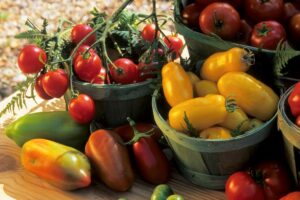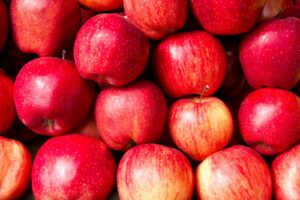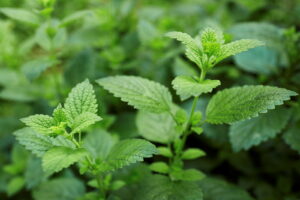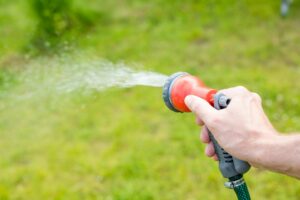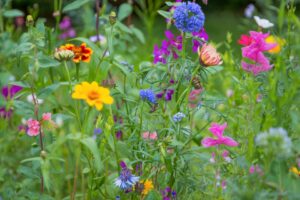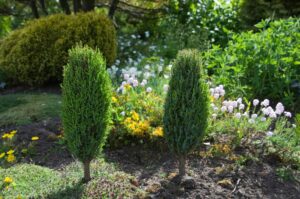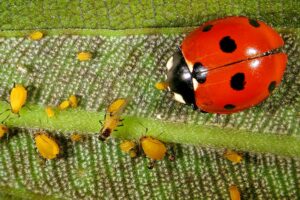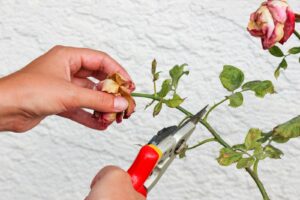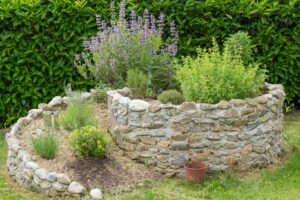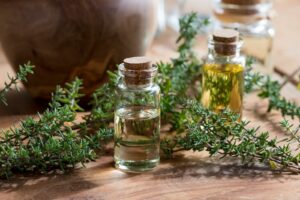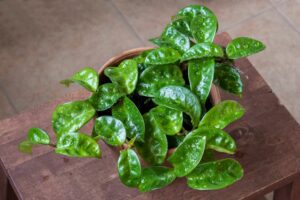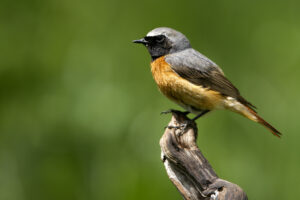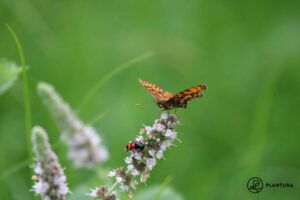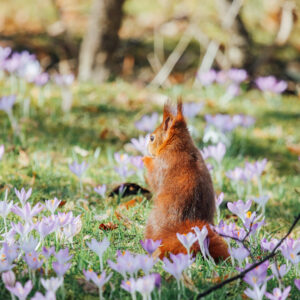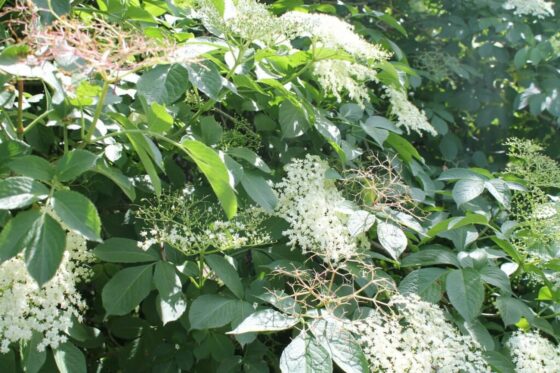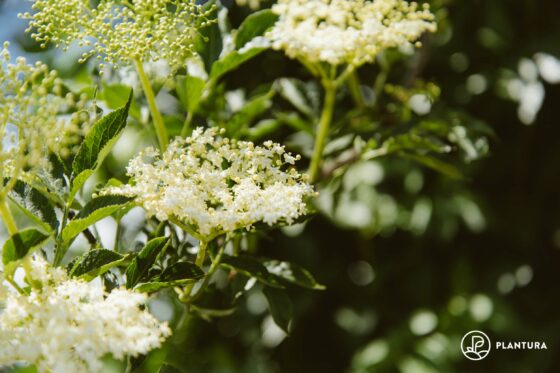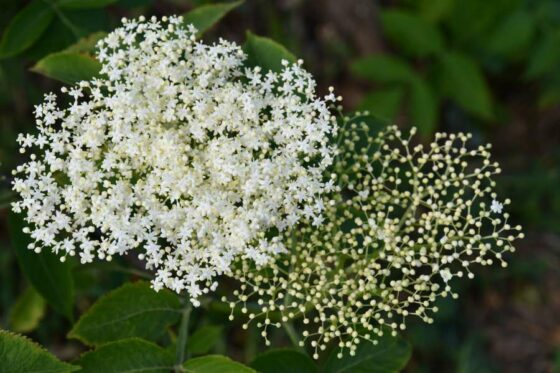Picking elderberries: harvest time, health benefits & uses
When are elderberries ripe and how do you pick them? Find out everything you need to know about harvesting and preserving elderberries, as well as some delicious ways to use them.
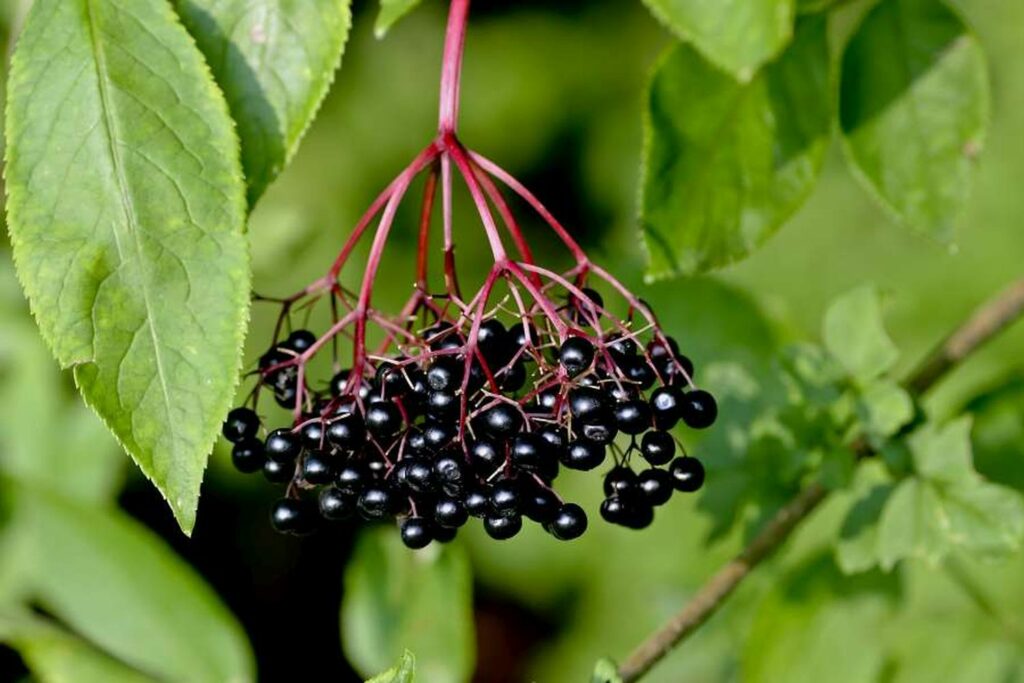
Black elderberry (Sambucus nigra) can be used in many ways. Probably the most well-known product made from elderberries is elderflower syrup. You have mostly likely had it before as cordial with sparkling water or in the refreshing summer cocktail “Hugo”. The elderberry bush is unique in that you can harvest and use both the flowers and fruit. Keep reading to find out how to do this. Check out our other article for more information on the elderberry bush, including planting, care, and propagation as well as different varieties.
Contents
When are elderberries ripe?
Not only can ripe elderberries be harvested and used, but the flowers of the elderberry bush can also be used in a variety of ways. It should be noted, however, that there is no fruit without flowers. If you want to harvest both elderflowers in early summer and elderberries in late summer, don’t pick all of the elderflowers; otherwise, no fruit will form.
When to harvest elderflowers
Elderflowers bloom from the end of May to June. Harvest as soon as the individual flowers open.
When to pick elderberries
Elderberries ripen between the end of September and October. Only harvest the elderberries once all of the berries are ripe. Never eat raw elderberries because some are toxic when consumed raw. Cook ripe elderberries thoroughly before eating them so that the toxic ingredients lose their potency.
Tip: The elderberry bush is a very bird-friendly shrub because of its fruits. It is best to always leave a few elderberries behind for your chirping garden visitors.
How to pick elderberries and elderflowers
You will need a pair of scissors or a knife and a basket or container to put the flowers or fruit in when harvesting elderberries. If possible, wear dark and older clothing when harvesting elderberries, as the juice of the elderberries is very colour-intensive and elderberry stains are difficult to wash out.
Harvesting elderflowers
On a cool sunny morning, cut the elderflower clusters off, when the dew on the freshly opened individual flowers has dried off, and place them loosely in a basket. Use the harvested elderflowers as soon as possible, otherwise they will wither.
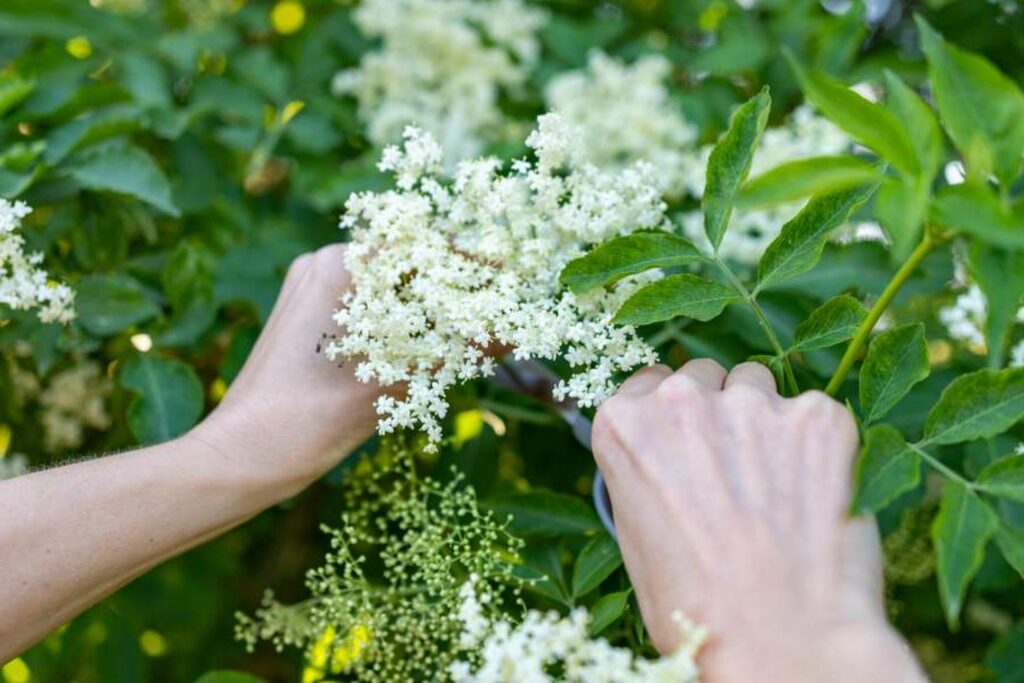
Harvesting elderberries
If possible, wait to harvest the elderberries until all of the berries are dark purple to black. Red elderberries (Sambucus racemosa), are ripe when the berries are red. Cut the elderberry clusters off the bush and gently place them in a container so that the juicy berries do not burst.
Which parts of the elderberry plant are edible?
Elderberries are high in antioxidants and vitamins making their health benefits massive. It was an important medicinal plant in the Middle Ages and even today hot elderberry juice and elderflower tea are common home remedies for a cold.
Elderflowers contain essential oils, tannins and mucilage, flavonoids, potassium and diaphoretic glycosides. Elderberries are true vitamin boosters and, in addition to vitamins C and B2, also contain essential oils and flavonoids, as well as anthocyanins, minerals and folic acid.
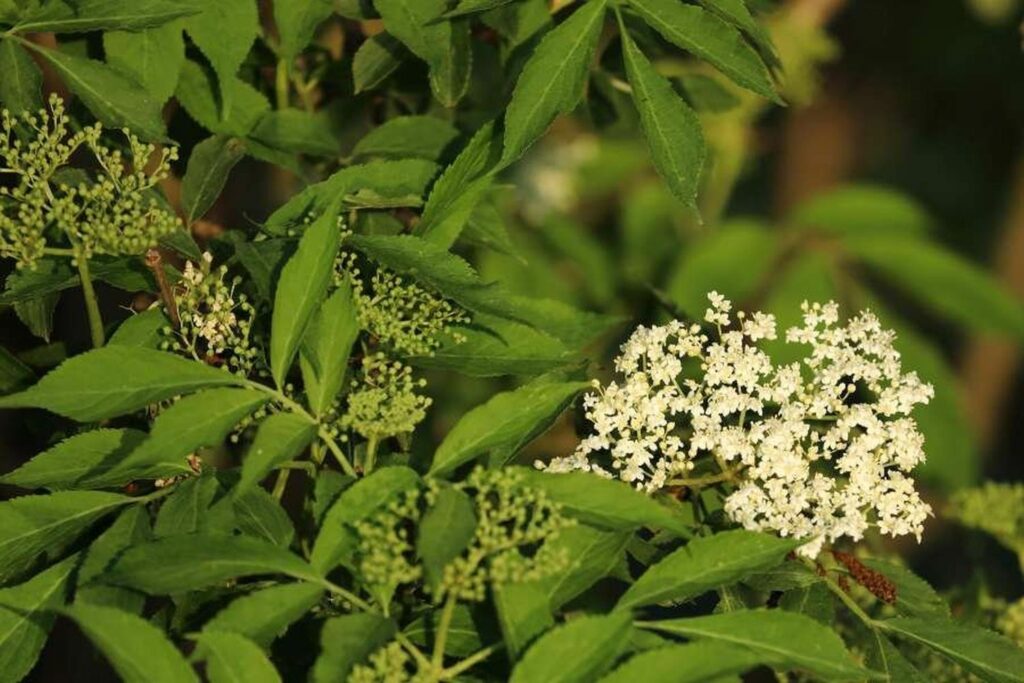
However, elderberry leaves, bark and seeds also contain toxic cyanogenic glycosides. Only eat elderberries after boiling them and removing all seeds with a sieve. It is important to remove the seeds as red elderberry seeds contain more toxic substances than black elderberry seeds and do not lose them completely when cooked.
How to use and preserve elderflowers
Elderflowers can be used to make a variety of products. Here are some ideas for treats you can make with the creamy white blossoms, as well as how to preserve them.
Elderflower syrup
From the blossoms, you can make a delicious elderflower syrup with just a few ingredients. You will need water, sugar, and lemons or oranges in addition to the elderflowers. The syrup will keep for about a year if stored properly.
The elderflower syrup tastes great in a cocktail with prosecco, mineral water, and mint. This drink combo also is delicious without the prosecco and very refreshing on a hot summer day.

Elderflower liqueur
Elderflower liqueur is also simple to make. To make elderflower liqueur, combine elderflowers, water, sugar, and lemons with a clear liquor like vodka.
Drying elderflowers
It is easy to dry the elderflowers after harvesting them for making elderflower tea in winter. Cut off the thicker flower stems just before the first branching and place the harvested blooms on a cake rack or grate to allow for ventilation from below. Dry the elderflowers in a shady, warm and airy spot. Turn them daily. If the blossoms rustle when they are moved, it indicates that they are completely dry. At this point, pick the individual flowers from the stems and store them in an airtight container, such as a screw-top jar, in a dark place for up to a year.

Freezing elderflowers
If you do not want to use the elderflowers straightaway, you can freeze them instead. After shaking off any dirt and insects, briefly dip the harvested elderflowers in water and then let them drain. Spread the flowers out on a baking sheet or tray and place it in the freezer for a few hours. After that, pick the individual flowers off from the stems and store them in a suitable container in the freezer.
How to use and preserve elderberries
While elderflowers are harvested in early summer, elderberries are harvested in late summer. Like the plant’s blooms, elderberries can also be used in a variety of ways.
Elderberry juice
After harvesting, elderberries can be processed into a juice. First separate washed elderberries from their stems, for example by plucking them with a fork. Elderberries are only edible when cooked, as the toxic sambunigrin contained within them loses its potency when heated.

Elderberry syrup
Make elderberry syrup by combining elderberry juice with water, sugar and lemons, just like elderflower syrup.
Elderberry liquor
Make elderberry liqueur by combining elderberry juice with sugar, vanilla and alcohol such as rum. Enjoy neat or in an aperitif.
Elderberry jelly
Elderberry jelly is also a good way to use and preserve the elderberries. For this you need elderberry juice, lemon juice, jellying sugar and, if desired, spices such as cloves or cinnamon.
Freezing elderberries
Elderberries also freeze well. Separate the berries from the stems with a fork and then freeze them. Alternatively, freeze elderberry panicles for a few hours before removing the berries. This is a great way to avoid elderberry juice stains.
Read our pruning elderberries article to learn how to properly prune your elderberry bush, so that you can enjoy a bountiful harvest year after year.
